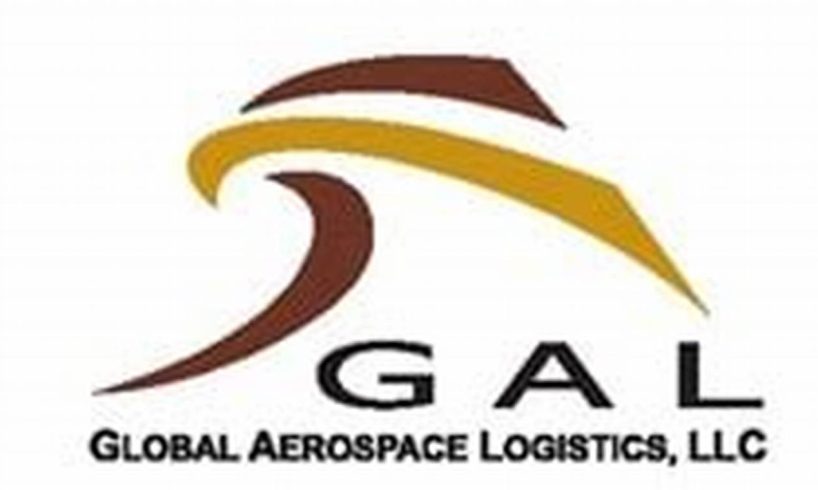
Global aerospace logistics is the management of the flow of goods, services, and information within the aerospace industry. It encompasses a wide range of activities, from the transportation and storage of aircraft and components to the provision of maintenance and repair services. The aerospace industry is a global one, with companies and suppliers located all over the world. As a result, global aerospace logistics is essential for ensuring that the industry operates efficiently and effectively.
There are many benefits to using global aerospace logistics. First, it can help to reduce costs. By consolidating shipments and using efficient transportation methods, companies can save money on their logistics costs. Second, global aerospace logistics can improve delivery times. By using faster and more reliable shipping methods, companies can get their products to their customers more quickly. Third, global aerospace logistics can help to improve quality. By using specialized logistics providers, companies can ensure that their products are handled and stored properly.
The aerospace industry has a long history of using global logistics. In the early days of the industry, aircraft were often shipped by boat or train. However, as the industry grew, the need for faster and more efficient shipping methods became apparent. In the 1950s, the first air cargo airlines were established, and the use of global aerospace logistics began to take off. Today, global aerospace logistics is an essential part of the aerospace industry, and it plays a vital role in the success of the industry.
1. Transportation
Transportation is a critical part of global aerospace logistics. The movement of aircraft and components by air, land, and sea is essential for the smooth and efficient operation of the aerospace industry. Without reliable and efficient transportation, companies would not be able to get their products to market or provide the necessary support to their customers.
- Air transportation is the most common method of transporting aircraft and components. Air transportation is fast and efficient, and it can be used to reach destinations all over the world. However, air transportation can also be expensive, and it is not always the most practical option for transporting large or heavy items.
- Land transportation is another common method of transporting aircraft and components. Land transportation is less expensive than air transportation, and it can be used to transport large or heavy items. However, land transportation is also slower than air transportation, and it can be more difficult to coordinate.
- Sea transportation is the least common method of transporting aircraft and components. Sea transportation is the slowest and most expensive option, but it can be used to transport very large or heavy items. Sea transportation is also a good option for transporting items to remote destinations.
- Intermodal transportation is the use of two or more modes of transportation to move a single shipment. Intermodal transportation can be used to combine the advantages of different modes of transportation, such as the speed of air transportation with the cost-effectiveness of land transportation. However, intermodal transportation can also be more complex and difficult to coordinate.
The choice of transportation method depends on a number of factors, including the size and weight of the shipment, the distance to be traveled, and the cost of transportation. By understanding the different transportation options available, companies can choose the most efficient and cost-effective method for their needs.
2. Storage
Storage is a critical part of global aerospace logistics. The warehousing of aircraft and components is essential for the smooth and efficient operation of the aerospace industry. Without adequate storage facilities, companies would not be able to store their aircraft and components safely and securely. This would lead to delays in production and delivery, and could even result in damage to valuable assets.
- Facet 1: Types of storage facilities
There are a variety of different types of storage facilities that can be used to store aircraft and components. These facilities range from simple warehouses to specialized climate-controlled facilities. The type of storage facility that is used will depend on the specific needs of the company. - Facet 2: Location of storage facilities
The location of storage facilities is also an important consideration. Companies need to choose a location that is convenient for their operations. The location should also be secure and have good access to transportation. - Facet 3: Management of storage facilities
The management of storage facilities is also critical. Companies need to develop and implement effective inventory management systems. They also need to ensure that their facilities are properly maintained and secure. - Facet 4: Security of storage facilities
The security of storage facilities is also a top priority. Companies need to take steps to protect their aircraft and components from theft and damage. This may include installing security cameras, hiring security guards, and implementing access control systems.
By understanding the different aspects of storage, companies can develop and implement effective storage strategies. This will help them to improve their operations and gain a competitive advantage.
3. Maintenance and repair
Maintenance and repair are essential components of global aerospace logistics. Aircraft and components require regular maintenance and repair to ensure their safety and performance. Without proper maintenance and repair, aircraft could become unsafe to fly, and components could fail, leading to costly delays and even accidents.
There are a number of different types of maintenance and repair services that can be performed on aircraft and components. These services range from simple inspections to major overhauls. The type of service that is required will depend on the age and condition of the aircraft or component.
Maintenance and repair services can be performed by a variety of different organizations, including airlines, manufacturers, and independent repair stations. The choice of provider will depend on the specific needs of the customer.
The maintenance and repair of aircraft and components is a complex and challenging task. It requires specialized knowledge and skills. However, it is an essential part of global aerospace logistics. By ensuring that aircraft and components are properly maintained and repaired, companies can improve safety, reduce costs, and improve customer satisfaction.
Here are some real-life examples of the importance of maintenance and repair in global aerospace logistics:
- In 2019, a Southwest Airlines flight was forced to make an emergency landing after one of its engines failed. The engine failure was caused by a lack of proper maintenance.
- In 2018, a Lion Air flight crashed into the Java Sea, killing all 189 people on board. The crash was caused by a faulty sensor that had not been properly repaired.
These are just two examples of the many accidents that have been caused by improper maintenance and repair. By understanding the importance of maintenance and repair, companies can help to prevent these accidents from happening.
The maintenance and repair of aircraft and components is a critical part of global aerospace logistics. By ensuring that aircraft and components are properly maintained and repaired, companies can improve safety, reduce costs, and improve customer satisfaction.
4. Inventory management
Inventory management is a critical part of global aerospace logistics. The tracking and management of aircraft and components is essential for the smooth and efficient operation of the aerospace industry. Without effective inventory management, companies would not be able to keep track of their aircraft and components, which could lead to delays, lost sales, and even safety hazards.
There are a number of different inventory management systems that can be used to track and manage aircraft and components. These systems range from simple manual systems to complex computerized systems. The type of system that is used will depend on the size and complexity of the company’s operations.
Regardless of the system that is used, effective inventory management requires a number of key elements, including:
- Accurate and up-to-date inventory records
- A system for tracking the movement of inventory
- Procedures for managing inventory levels
- A system for forecasting demand
By implementing effective inventory management practices, companies can improve their operations and gain a competitive advantage. Some of the benefits of effective inventory management include:
- Reduced costs
- Improved customer service
- Increased safety
Here is a real-life example of the importance of inventory management in global aerospace logistics:
In 2019, Boeing was forced to halt production of its 737 MAX aircraft due to a lack of inventory. The lack of inventory was caused by a number of factors, including a supplier shortage and a production backlog. The halt in production cost Boeing billions of dollars and damaged the company’s reputation.
This example shows how important inventory management is to the global aerospace industry. By implementing effective inventory management practices, companies can avoid costly delays and disruptions.
Inventory management is a critical part of global aerospace logistics. By understanding the importance of inventory management and implementing effective inventory management practices, companies can improve their operations and gain a competitive advantage.
5. Customs clearance
Customs clearance is a critical part of global aerospace logistics. The process of getting aircraft and components through customs can be complex and time-consuming, and it is important for companies to understand the requirements and procedures involved.
- Facet 1: Documentation
One of the most important aspects of customs clearance is the documentation. Companies need to ensure that they have all of the required documentation, including the aircraft’s registration, airworthiness certificate, and proof of ownership. They also need to make sure that the documentation is accurate and complete.
- Facet 2: Inspections
In addition to documentation, customs officials may also inspect the aircraft and its components. These inspections are typically done to ensure that the aircraft is in compliance with all applicable safety regulations. Companies should be prepared for these inspections and should make sure that their aircraft is clean and well-maintained.
- Facet 3: Duties and taxes
In some cases, companies may be required to pay duties and taxes on their aircraft and components. The amount of duties and taxes that are owed will vary depending on the country of origin and the value of the aircraft and components. Companies should be aware of the duties and taxes that may be owed and should factor these costs into their shipping budget.
- Facet 4: Penalties
If companies fail to comply with customs regulations, they may be subject to penalties. These penalties can be significant, so it is important for companies to be aware of the requirements and to take steps to comply with them.
By understanding the customs clearance process and by taking steps to comply with all applicable regulations, companies can avoid delays and penalties. This will help them to ensure that their aircraft and components are delivered to their destination on time and in good condition.
6. Security
Security is a critical aspect of global aerospace logistics. The protection of aircraft and components from theft and damage is essential for the smooth and efficient operation of the industry. Without adequate security measures, companies would be at risk of losing valuable assets and could even face safety hazards.
- Physical security
Physical security measures are designed to prevent unauthorized access to aircraft and components. These measures can include fences, gates, security cameras, and security guards. Companies should also implement procedures to control access to sensitive areas and to track the movement of aircraft and components.
- Cybersecurity
Cybersecurity measures are designed to protect aircraft and components from cyberattacks. These measures can include firewalls, intrusion detection systems, and anti-malware software. Companies should also implement procedures to train employees on cybersecurity best practices and to respond to cyberattacks.
- Transportation security
Transportation security measures are designed to protect aircraft and components during transportation. These measures can include secure packaging, tracking devices, and armed escorts. Companies should also work with transportation providers to develop and implement security plans.
- Personnel security
Personnel security measures are designed to screen and vet employees and contractors who have access to aircraft and components. These measures can include background checks, drug tests, and security clearances. Companies should also implement procedures to monitor employee and contractor activity and to report any suspicious behavior.
By implementing effective security measures, companies can protect their aircraft and components from theft and damage. This will help to ensure the smooth and efficient operation of the global aerospace logistics industry.
7. Sustainability
Sustainability is becoming increasingly important in all industries, and the aerospace industry is no exception. Global aerospace logistics is a complex and challenging field, and companies are under pressure to reduce their environmental impact. There are a number of ways that companies can make their global aerospace logistics operations more sustainable, including:
- Using more fuel-efficient aircraft.
- Optimizing flight routes to reduce fuel consumption.
- Using sustainable packaging materials.
- Recycling and reusing materials.
By implementing these and other sustainability measures, companies can reduce their environmental impact and improve their bottom line. For example, one major airline has saved millions of dollars by optimizing its flight routes and using more fuel-efficient aircraft.
Sustainability is not just a matter of cost savings, however. It is also a matter of corporate responsibility. The aerospace industry has a major impact on the environment, and companies have a responsibility to reduce their environmental footprint. By embracing sustainability, companies can help to protect the planet for future generations.
The use of environmentally friendly practices in the logistics process is an essential component of global aerospace logistics. By understanding the importance of sustainability and by implementing effective sustainability measures, companies can improve their operations and gain a competitive advantage.
8. Technology
Technology plays a vital role in the efficiency and effectiveness of global aerospace logistics. By utilizing advanced technologies, companies can streamline their operations, reduce costs, and improve customer service.
- Data analytics
Data analytics is used to collect, analyze, and interpret data to improve decision-making. In global aerospace logistics, data analytics can be used to optimize inventory levels, improve routing and scheduling, and predict demand. For example, one major airline uses data analytics to predict flight delays and proactively notify passengers.
- Artificial intelligence (AI)
AI is used to automate tasks, improve decision-making, and provide predictive analytics. In global aerospace logistics, AI can be used to automate tasks such as order processing and inventory management. AI can also be used to improve decision-making by providing insights into data that would be difficult or impossible for humans to analyze. For example, one company uses AI to predict the risk of delays and disruptions in its global supply chain.
- Blockchain
Blockchain is a distributed ledger technology that provides a secure and transparent way to track and manage transactions. In global aerospace logistics, blockchain can be used to track the movement of goods and to ensure the integrity of data. For example, one company uses blockchain to track the movement of aircraft parts from the manufacturer to the customer.
- Cloud computing
Cloud computing provides access to computing resources on demand. In global aerospace logistics, cloud computing can be used to store and process data, run applications, and manage infrastructure. For example, one company uses cloud computing to manage its global inventory and to provide real-time visibility to its customers.
These are just a few examples of how technology is being used to improve the efficiency and effectiveness of global aerospace logistics. By continuing to invest in technology, companies can gain a competitive advantage and better serve their customers.
9. Partnerships
Partnerships are essential for the efficient and effective operation of global aerospace logistics. By collaborating with other organizations, companies can access a wider range of resources and expertise. This can help them to provide more comprehensive and cost-effective logistics services.
- Joint ventures
Joint ventures are a common type of partnership in the aerospace industry. In a joint venture, two or more companies combine their resources and expertise to create a new company. This can allow companies to share the risks and costs of new ventures, and to access new markets.
- Strategic alliances
Strategic alliances are another common type of partnership in the aerospace industry. In a strategic alliance, two or more companies agree to work together on a specific project or initiative. This can allow companies to pool their resources and expertise, and to gain access to new markets.
- Outsourcing
Outsourcing is the practice of contracting with a third-party provider to perform a specific task or function. This can allow companies to focus on their core competencies, and to reduce their costs. Outsourcing is becoming increasingly common in the aerospace industry.
- Supplier relationships
Strong supplier relationships are essential for the efficient and effective operation of global aerospace logistics. Companies need to work closely with their suppliers to ensure that they are getting the best possible price and quality.
By forming partnerships with other organizations, companies can improve their global aerospace logistics operations. This can lead to reduced costs, improved efficiency, and better customer service.
FAQs about Global Aerospace Logistics
Global aerospace logistics is a complex and challenging field, but it is also an essential one. By understanding the key aspects of global aerospace logistics, companies can improve their operations and gain a competitive advantage.
Question 1: What is global aerospace logistics?
Answer: Global aerospace logistics is the management of the flow of goods, services, and information within the aerospace industry. It encompasses a wide range of activities, from the transportation and storage of aircraft and components to the provision of maintenance and repair services.
Question 2: Why is global aerospace logistics important?
Answer: Global aerospace logistics is essential for the smooth and efficient operation of the aerospace industry. It ensures that aircraft and components are delivered to their destinations on time and in good condition, and that maintenance and repair services are available when needed.
Question 3: What are the challenges of global aerospace logistics?
Answer: Global aerospace logistics faces a number of challenges, including the high cost of transportation, the need for specialized equipment and facilities, and the complex regulatory environment.
Question 4: What are the trends in global aerospace logistics?
Answer: The global aerospace logistics industry is constantly evolving, with new technologies and practices emerging all the time. Some of the key trends in the industry include the use of data analytics, artificial intelligence, and blockchain technology.
Question 5: What are the future prospects for global aerospace logistics?
Answer: The future of global aerospace logistics is bright. The industry is expected to grow significantly in the coming years, driven by the increasing demand for air travel and the development of new technologies.
Question 6: How can companies improve their global aerospace logistics operations?
Answer: Companies can improve their global aerospace logistics operations by focusing on the following key areas:
- Transportation
- Storage
- Maintenance and repair
- Inventory management
- Customs clearance
- Security
- Sustainability
- Technology
- Partnerships
By understanding the importance of these key areas and by implementing effective strategies, companies can improve their operations and gain a competitive advantage.
Summary: Global aerospace logistics is a vital part of the aerospace industry. By understanding the key aspects of global aerospace logistics, companies can improve their operations and gain a competitive advantage.
Transition to the next article section: The future of global aerospace logistics is bright. The industry is expected to grow significantly in the coming years, driven by the increasing demand for air travel and the development of new technologies.
Tips for Global Aerospace Logistics
Global aerospace logistics is a complex and challenging field, but it is also an essential one. By following these tips, companies can improve their global aerospace logistics operations and gain a competitive advantage.
Tip 1: Focus on the key aspects of global aerospace logistics.
The key aspects of global aerospace logistics include transportation, storage, maintenance and repair, inventory management, customs clearance, security, sustainability, technology, and partnerships. By understanding the importance of these key areas and by implementing effective strategies, companies can improve their operations and gain a competitive advantage.
Tip 2: Use technology to improve efficiency and effectiveness.
Technology plays a vital role in the efficiency and effectiveness of global aerospace logistics. By utilizing advanced technologies, companies can streamline their operations, reduce costs, and improve customer service.
Tip 3: Form partnerships with other organizations.
Partnerships are essential for the efficient and effective operation of global aerospace logistics. By collaborating with other organizations, companies can access a wider range of resources and expertise. This can help them to provide more comprehensive and cost-effective logistics services.
Tip 4: Focus on sustainability.
Sustainability is becoming increasingly important in all industries, and the aerospace industry is no exception. By implementing sustainable practices, companies can reduce their environmental impact and improve their bottom line.
Tip 5: Invest in training and development.
A well-trained and experienced workforce is essential for the successful operation of any global aerospace logistics operation. Companies should invest in training and development programs to ensure that their employees have the skills and knowledge they need to succeed.
By following these tips, companies can improve their global aerospace logistics operations and gain a competitive advantage.
The future of global aerospace logistics is bright. The industry is expected to grow significantly in the coming years, driven by the increasing demand for air travel and the development of new technologies.
Conclusion
Global aerospace logistics is a critical part of the aerospace industry. It encompasses a wide range of activities, from the transportation and storage of aircraft and components to the provision of maintenance and repair services. By understanding the key aspects of global aerospace logistics, companies can improve their operations and gain a competitive advantage.
The future of global aerospace logistics is bright. The industry is expected to grow significantly in the coming years, driven by the increasing demand for air travel and the development of new technologies. Companies that are able to adapt to the changing landscape of global aerospace logistics will be well-positioned to succeed in the years to come.






